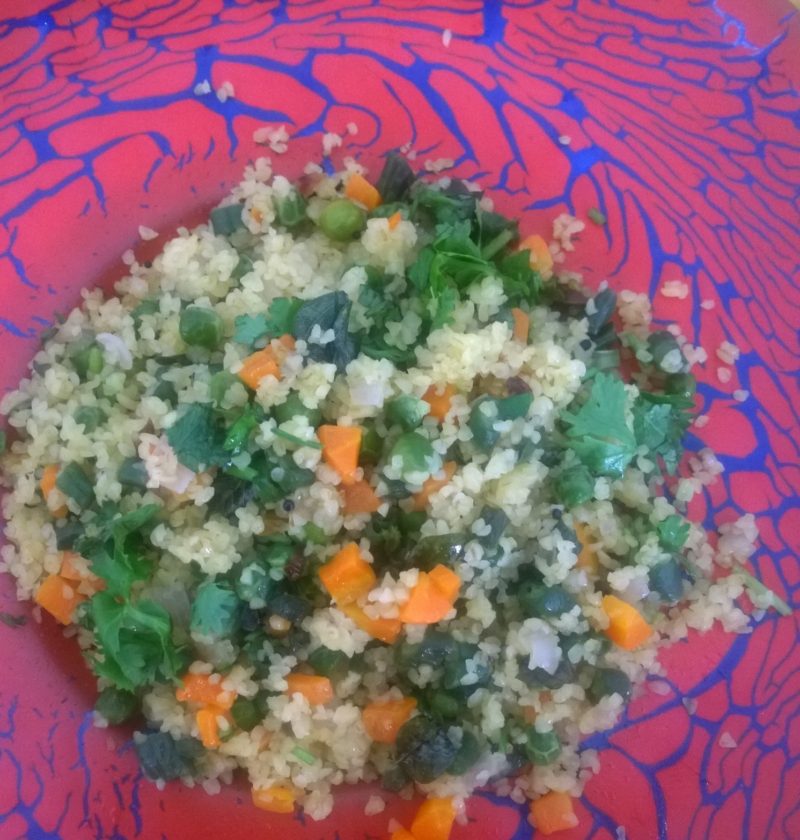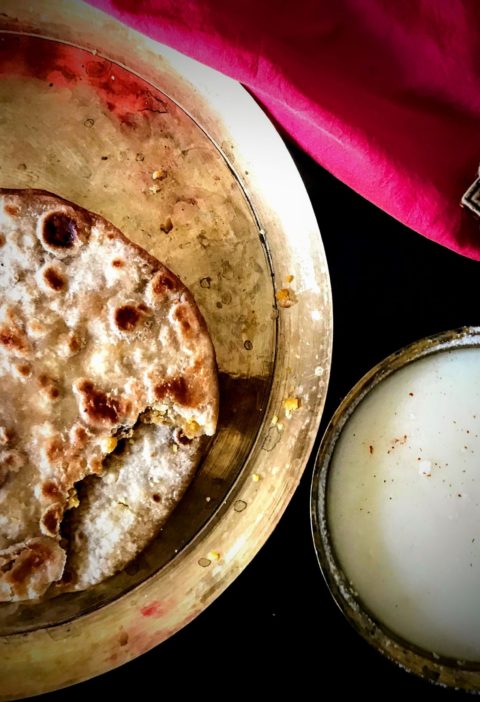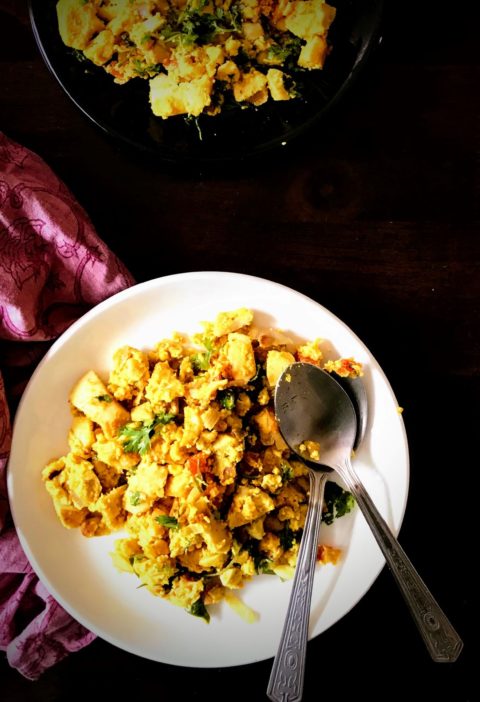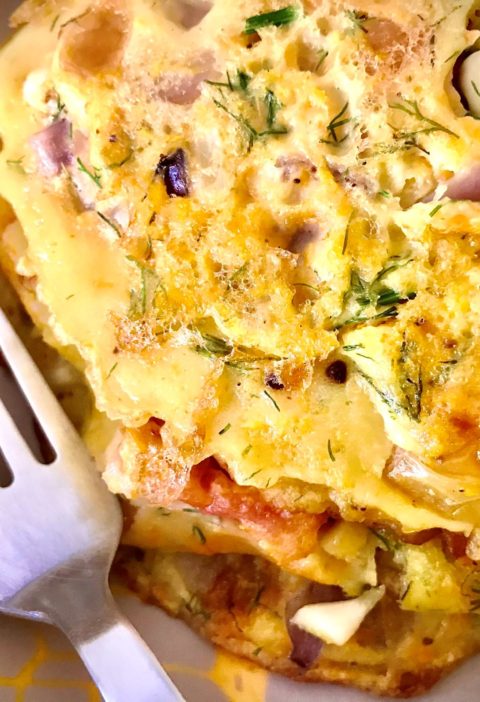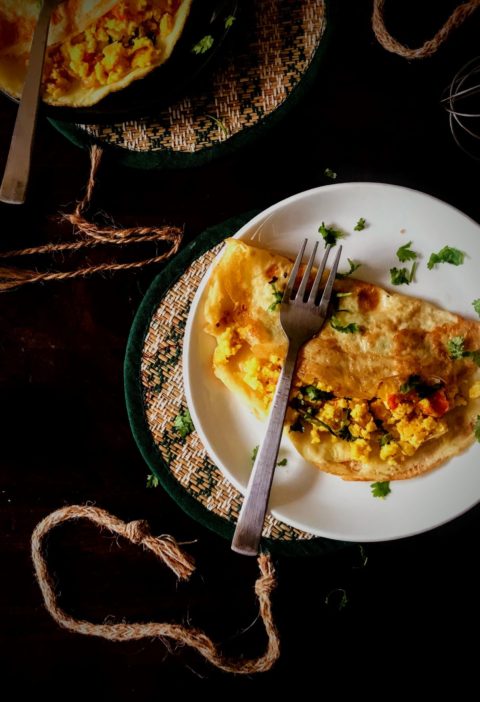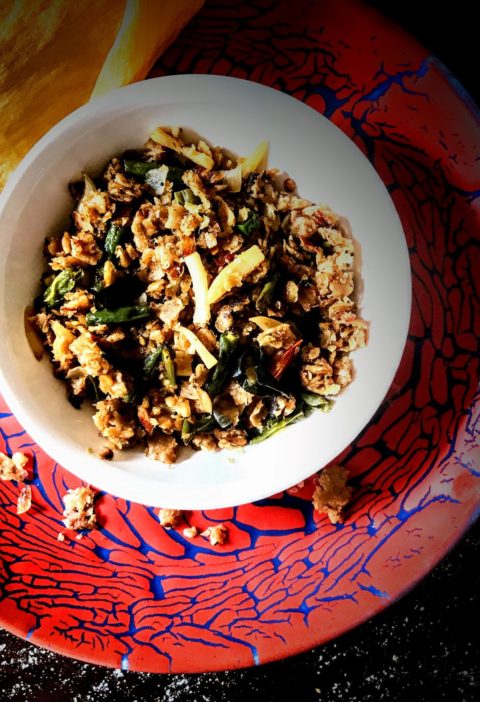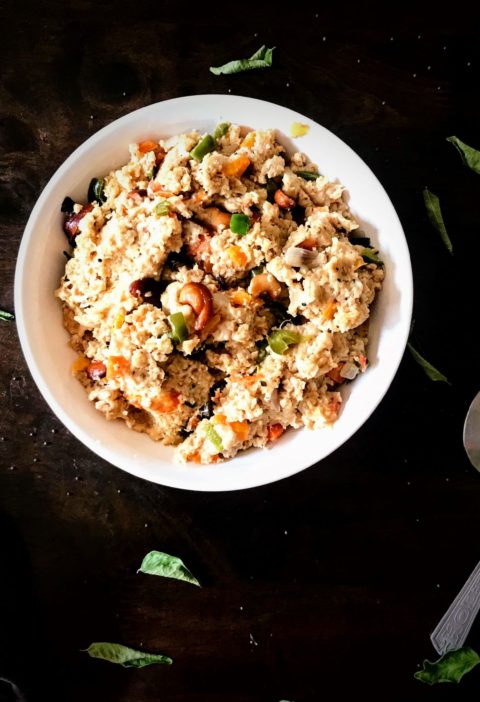This is one recipe, which I would like to believe has been originally created by me and my taste-bud. Although not completely untrue, since I have never tasted Dalia Upma before I made it by myself with my own approved ingredients.
Honestly, upma was not a very popular dish in our family. And if by any chance by the grace of my mother’s good mood and blessings, we had a chance to have upma for our breakfast, it was none other than rawa/semolina upma that would make its way to our plates. However, none the less, me and my brother used to finish our plates with an unusual satisfaction, leaving no traces of semolina on our plates and around our plates.
Also, my interaction with dalia happened after I left home to do my Post Graduation and started staying in hostel. Dalia used to be our breakfast, and we would get a handful of the cereal which we would mix with hot milk and sugar. And then I realized, back home my parents had also started having dalia, but in the form of Khichdi.
Somehow with time, when I started living on my own, I realized the importance of dalia in terms of health, wealth (dalia is pocket friendly too) and time, and started including the cereal in my grocery list. However, I was not too much comfortable with sweet dalia and even khichdi, and hence introduced ‘Dalia Upma’ in my breakfast, lunch and dinner menus.
Before I jump into the recipe, let me highlight few but important benefits of dalia/broken wheat, which I am sure will atleast make you consider including it in your next grocery list.
Benefits of Dalia
- Dalia is a versatile cereal which can be prepared with vegetables as a salt dish like, upma, khichdi, etc. or can be taken with milk as a sweet dish
- Loaded with fibre, a bowl of dalia will keep you satiated for long and thus helps in weight loss
- Owing to high fibre content, dalia helps in maintaining cholesterol level and healthy heart
- The rich in fibre property also has few other benefits, like, preventing constipation, increasing metabolism, and also helping in controlling sugar level which is beneficial for diabetic patient etc.
- Last but not the least – all dalia dishes are really easy to cook
I am sure after knowing so many benefits of dalia, you would not want to wait any more to try this ‘Dalia Upma’ recipe.
Preparation Time: 10 minutes Cooking Time: 20 – 25 minutes on low flame Yield: 3 bowls Equipments used: One Kadai, one spatula
Ingredients
- 1 cup dalia
- 1 medium sized onion chopped
- 1 carrot chopped
- ½ cup frozen green peas thawed
- 1 cup chopped beans
- 1/3 cup curry leaves
- Coriander leaves for garnishing
- 4-5 tablespoon vegetable oil
- ¼ teaspoon mustard seeds
- ½ teaspoon crushed ginger
- 1 green chilly chopped
- 2 teaspoons salt
- 1 teaspoon sugar
- 1 teaspoon ghee
Method
- Wash dalia and soak it overnight in water
- Heat oil in a kadai/pan and add mustard seeds
- Once the mustard seeds start popping, add chopped onion and lower the flame
- As the onion pieces turn golden brown/little transparent, add carrot pieces, beans, peas and curry leaves
- Cover the pan and let the vegetables cook for 8-10 minutes on low flame
- In the meantime, while the vegetables are getting cooked, drain water from soaked dalia
- Once the vegetable pieces are tender, add dalia and stir it to mix it evenly with the vegetable pieces
- Add salt, sugar and mix it well
- Add chopped green chilly pieces and finally add crushed ginger
- Remove from hob and add ghee and chopped coriander leaves
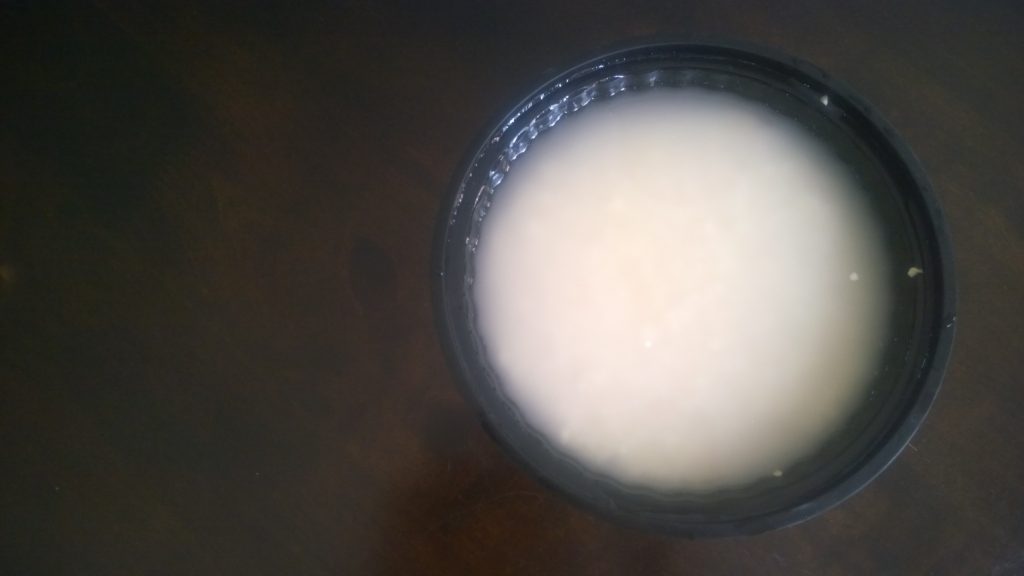
Wash and soak dalia overnight in water.
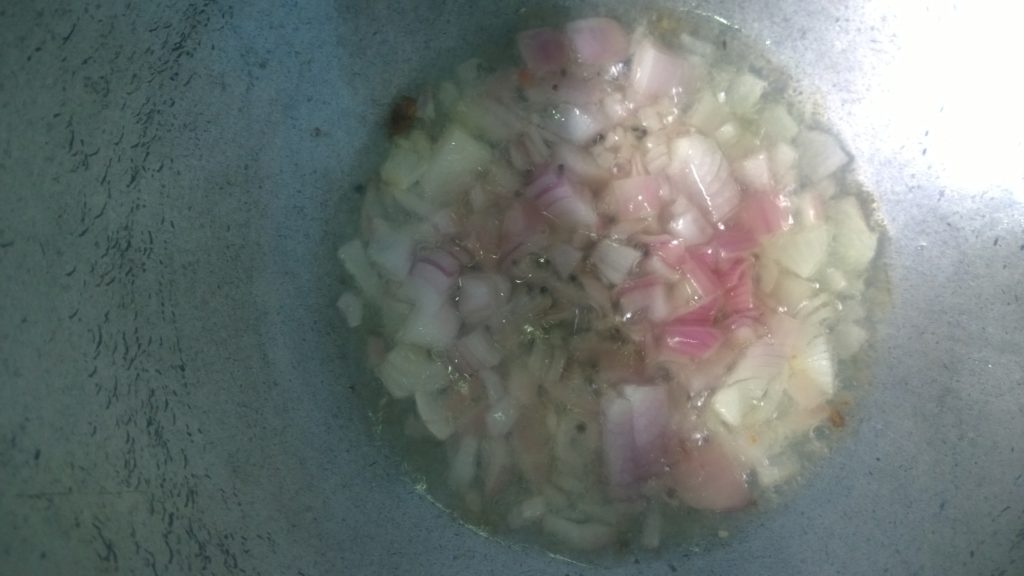
Add mustard seeds in hot oil and then add chopped onion.
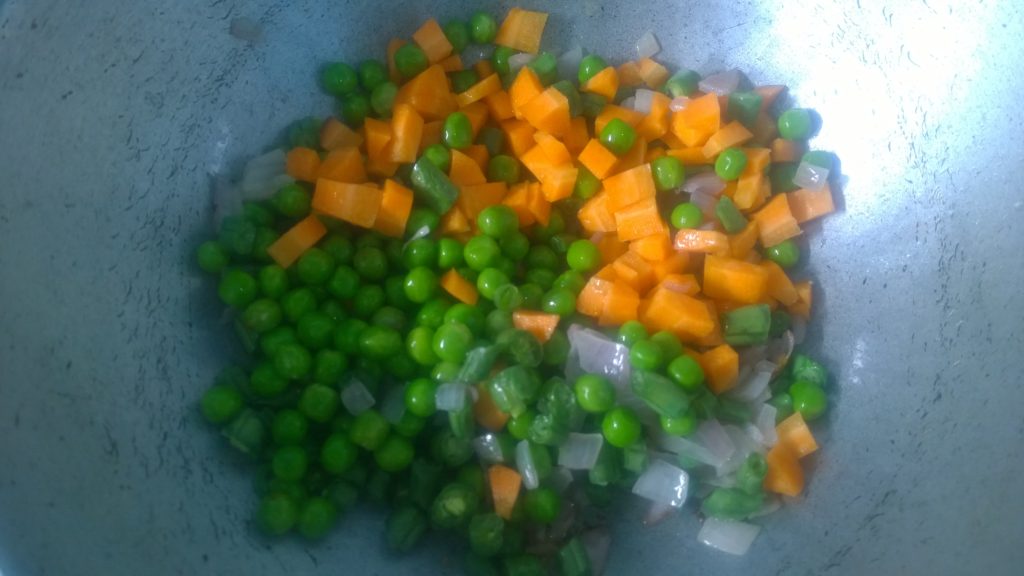
Add chopped vegetables once the onion turns golden brown and let it cook for 8-10 minutes
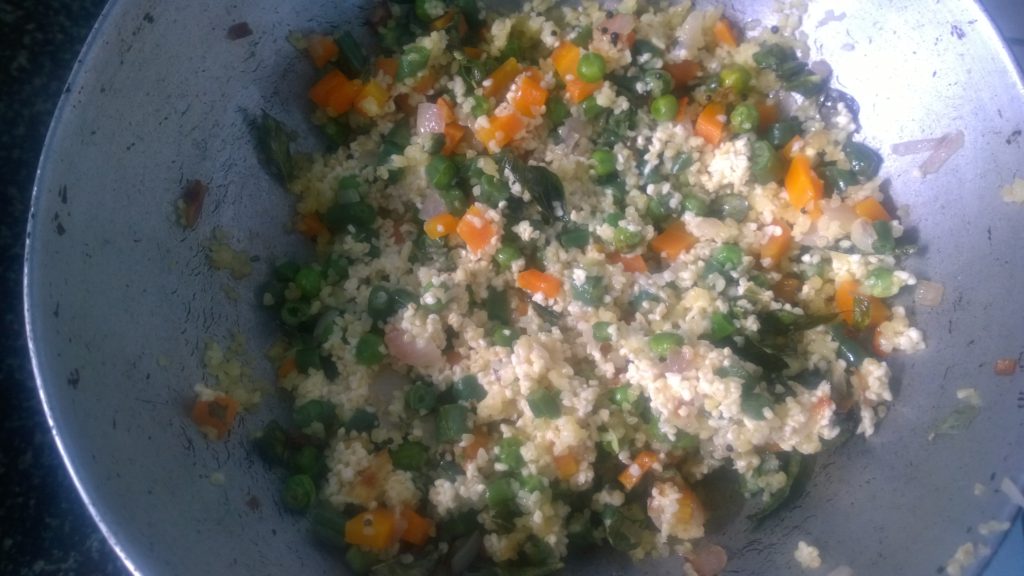
Add soaked dalia and evenly spread it with the vegetables.

Add crushed ginger.
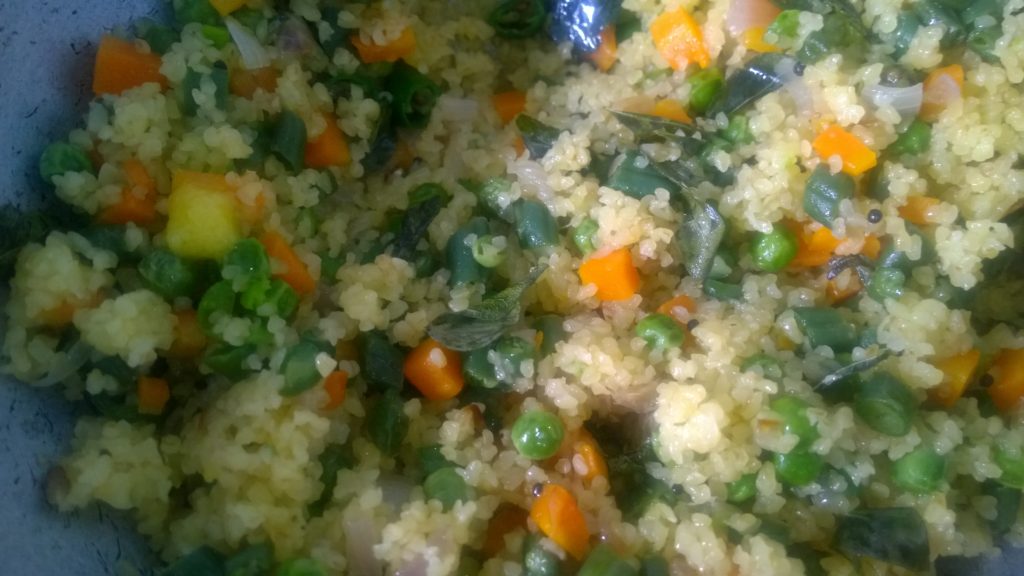
Add ghee.
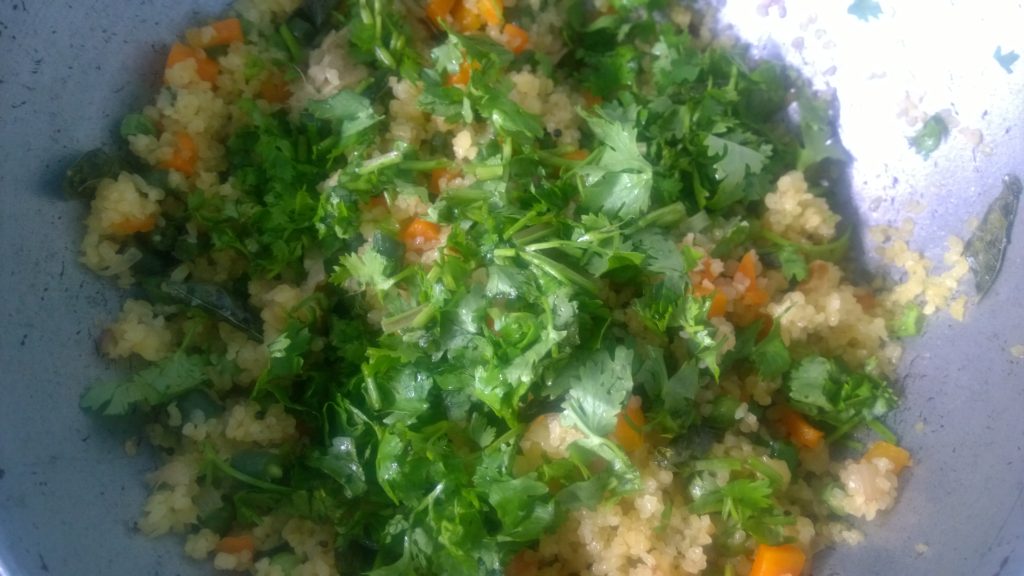
Add coriander leaves.
Tips
- Wash vegetables properly before chopping and avoid washing them after chopping. By doing so you retain the important nutrients of the vegetables
- Use fresh peas instead of frozen peas if you are preparing the dish in winter
- Soak the onion in water for a while to avoid burning eyes
- Ensure to lower the flame while adding onion pieces so that they do not burn
- It can also be prepared in Jain Food style. Just avoid onion and add the chopped vegetables just after the mustard seeds start popping
- If you wish you can add more vegetables, like, beetroot, bell peppers, potato, mushroom etc.
- If you don’t want to add sugar, reduce the proportion of salt as per your taste
- To get the best results cook the entire recipe on low flame
